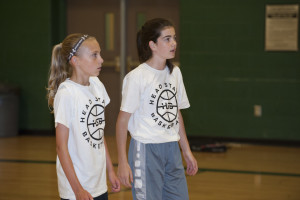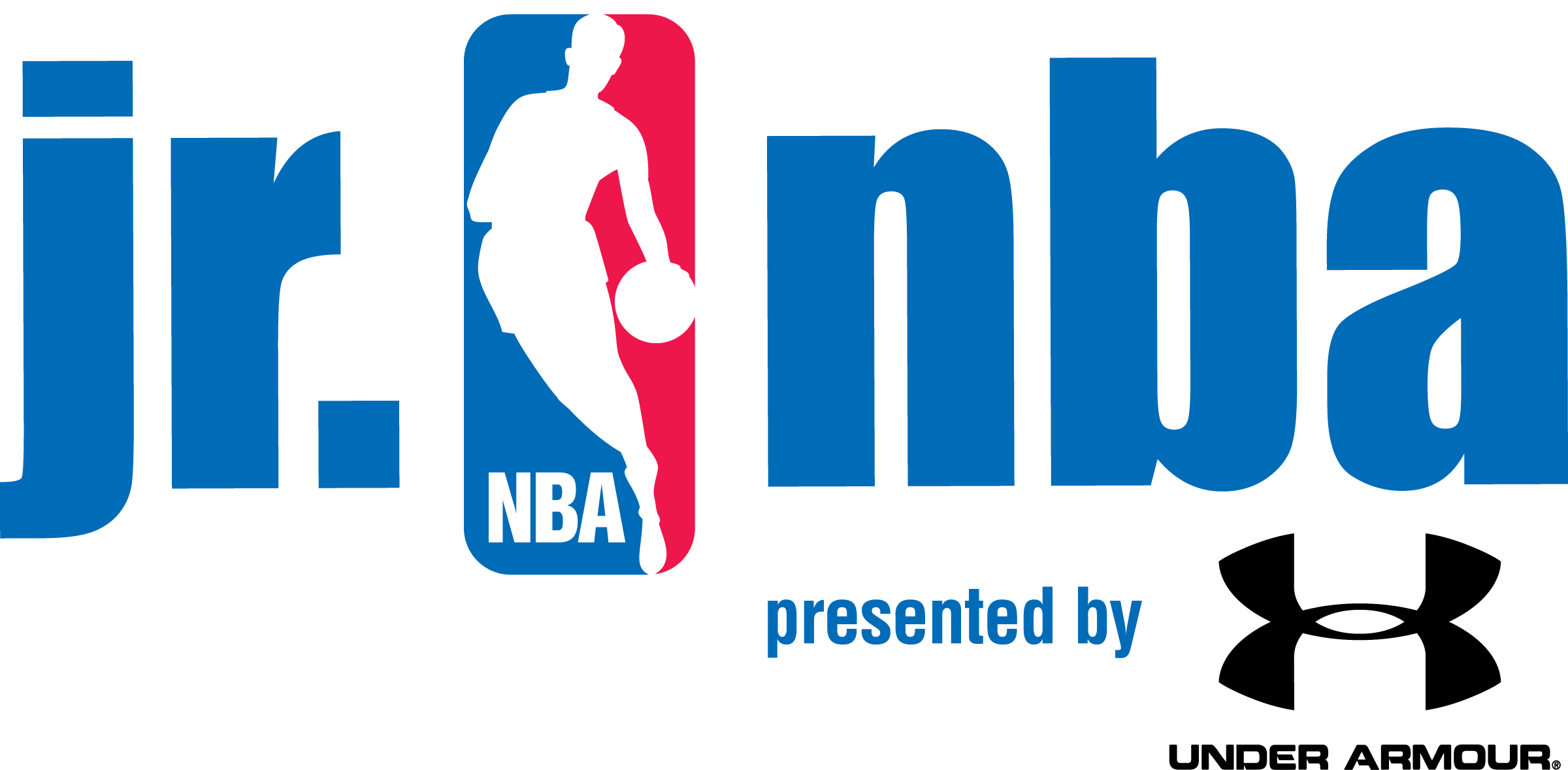
Basketball on the Edge – 11 Ways for Basketball Players to Earn More Playing Time – Vintage Edition
11 Ways for Basketball Players to Earn More Playing Time
1. Schedule a meeting with your coach and ask what you can do to help the team.
It is amazing what you can learn about your role on the team by communicating with your coach during the season. The coach will appreciate your initiative and you will have a much better understanding of what your coach wants you to do out on the court. The key to a successful meeting is to be open minded, listen to what your coach says, and most importantly, try to do what the coach asks you to do from that point forward. At the end of the season, ask your coach what you need to work on during the off-season to earn more playing time the following year.
2. Know your role and be honest with yourself.
Do what you’re good at. Not everyone can be the star and get the most shots. If you try to do things that you’re not good at, you’ll find yourself sitting next to your coach. If you’re great at rebounding and playing defense, do those things when you’re on the court. I was strictly an offensive player in high school, but when I got to college I realized that I could earn minutes by becoming a great defender. I sacrificed for the team and got my coach’s attention. As a result I started every game as a sophomore, junior, and senior. Be smart as a player and take advantage of opportunities where they present themselves. Do what you can do, not what you can’t do. Strengthen your strengths and work on your weaknesses in practice.
3. Work hard and hustle
Trust me when I say that coaches notice this. They notice it in practice, in games, even in open gym. It’s somewhat sad that hustling and working hard can set you apart, but it does. Force yourself to give great effort at all times. No one gives 100%, but keep pushing yourself closer to that standard and you’ll catch the attention of your coach. I can walk into a gym and pick out the kids who play hard after a couple trips up and down the court. I want those kids on my team and so does your coach.
4. Set screens and take charges.
These two skills are often overlooked by “average” players. Both involve giving up your body to help your team. A great screen gets a teammate open and will often free you up as well. A charge gets your team an extra possession and can also get in your opponent’s head and make them more hesitant to drive to the basket later in the game.
5. Play defense with desire.
Defense is half the game. Many players forget that. Don’t be one of them. Defense comes down to desire. Do you want to stop your opponent or are you happy to trade baskets? Not everyone will be a great shooter or have tremendous court vision, but every player can be a good defensive player. Are you willing to play hard on the defensive end of the floor and shut down your player while helping your teammates? If you can do that on a consistent basis your coach will find a way to get you on the court regardless of your other skills.
6. Box out on every possession.
Few players box out on any given shot. Your coach will notice if you do. Make boxing out a priority. Don’t be afraid to be physical. Pick up a foul boxing out. I can almost guarantee that your coach will crack a smile and encourage you to keep boxing out hard.
7. Take only good shots.
First, you should know what a good shot is for you, based on your ability to make different types of shots in practice. Then, you need to know what your coach considers a good shot. In general, a good shot is an open shot that you can make at a high-percentage when nobody else on your team has a better shot available. If a teammate has a better shot pass them the ball. If you take bad shots, you’ll be on the bench next to your coach.
8. Share the ball.
Be the player that makes the extra pass to help get your teammate a better shot. No one likes to play with someone who shoots every time they get the ball. Your coach will hesitate to play someone who only wants to shoot, even if they are a good shooter. The extra pass builds team chemistry and trust. A team with selfish players won’t be very successful. Help your coach build a culture of sharing the ball on your team and watch your minutes increase.
9. Listen and nod to the coach.
When your coach gives you instructions, encouragement, or criticism, nod when they are finished talking. This lets the coach know that you have understood their message. It is amazing how many players today don’t acknowledge the coach in this manner. Make this a habit and your coach will notice. When your coach calls your team together always sprint to the front and make eye contact with your coach while they are talking. You want to be front of mind when the coach thinks about who should be out on the court. Create habits that make you impossible for your coach to ignore.
10. Be a player that others want to play with and that coaches love to coach.
Bring effort and enthusiasm every day. Your coach shouldn’t have to coach effort. Your enthusiasm is contagious and will help inspire your teammates. Do the little things that only coaches notice and that help your team win games. Be a leader, both by example and by being vocal. Teammates and coaches love the player that rallies the team at critical moments.
11. Communicate.
Be the loudest talker on the floor. Not trash talker, but the kind of communication that helps win basketball games. Talk to teammates on defense, call out screens, let a teammate know they have help, call ball when stopping a fast break. Talk to teammates on offense, let them know you’re screening, tell them where to cut, remind them to get a good shot.
Click here to register for one of our upcoming programs!
Sign up now to get a “Head Start” on your competition with our free basketball tip of the day delivered straight to your inbox. Click below, enter your email and we’ll also send you our E-Book, “Mental Toughness, Improve Your Brain – Improve Your Game”.
Basketball on the Edge – 10 Things To Do When The Clock Is Stopped – Vintage Edition
1. Check the time and score.
Good players always know the time and the score. Be sure to remind your teammates of the game situation and how that impacts your strategy. Are we ahead or behind? Do we need to foul?
2. Make sure your teammates know who they are guarding.
Get everyone on your team to talk and point and communicate. This is especially important the younger you are. Missed assignments often result in easy baskets for the other team!
3. Remind a teammate individually of their responsibility.
Examples of this might include, “You’re taking the ball out of bounds against the press” or “Make sure you set the backscreen when we run the offense next time down,”
4. Gather your team together for a quick huddle.
You can’t take too much time, but just a quick word of encouragement, “Let’s D-up” or “Come on, we need to get a good shot next time down.” can help your entire team come together at critical moments in the game.
5. Compliment a teammate for a nice play.
“Nice pass on that last fast break!” or “Great defense against their pick and roll!” can go a long way toward encouraging your teammates to keep their effort level high and their head in the game.
6. Look to your coach.
Often your coach will use a stop in play to give instructions. If the gym is loud you may not hear, by giving the coach a quick glance when the whistle blows you’ll know if he or she is trying to get your attention.
7. Focus on what you need to do in the moment.
What are your responsibilities? Focus in on your role and what you can do to help your team on the next possession. Are you guarding the inbounder? Are you supposed to set a screen for a teammate? Is the other team pressing? Where should you be on the court? These are all things that you can be mentally rehearsing during a stop in play.
8. Catch your breath.
Your adrenalin level is high and you have been hustling all over the floor (you have been right?). Take a second when the whistle blows to take a deep breath and compose yourself so you are ready when play resumes.
9. Let your teammates know your time-out situation.
Do you have time-outs left? Tell your teammates “We have a time-out if we need it.” Do you have no time-outs? Tell your teammates “No time-outs left!” Games have been won and lost because teams didn’t know their time-out situation.
10. Let your teammates know the foul situation.
Are you in the one and one or double bonus? Let your teammates know. Comments like “Be strong with the ball, they have to foul” or “Let’s take the ball hard to the basket, we’re in the bonus” can help remind teammates to take advantage of opportunities to get to the free throw line.
These are ten things that good players can do when the clock is stopped during a basketball game. Many players use this time to look into the crowd, complain to an official, or get down on themselves for something that already happened. Don’t be that type of player. Instead, use the time when the clock is stopped to do one or more of the valuable things on this list to help your team win more games.
Click here to register for one of our upcoming programs!
Sign up now to get a “Head Start” on your competition with our free basketball tip of the day delivered straight to your inbox. Click below, enter your email and we’ll also send you our E-Book, “Mental Toughness, Improve Your Brain – Improve Your Game”.
Basketball on the Edge – Why Goals are Important for Young Basketball Players – Vintage Edition
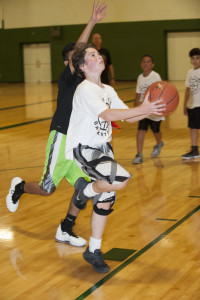
Let’s start with the premise that your child wants to become a good basketball player. Remember, that desire has to come from them. If it comes from you as the parent they are never going to love the game enough to practice, play, and get better.
The goal setting process begins with a vision. Does your child see themselves as a basketball player in the future? Can they see themselves playing on a local travel team, an AAU team, the high school varsity, a college team? Take your young player to games at all levels. You are providing opportunities for your child to envision themselves in those environments. Ask them questions like, “Would you like to play for the high school team some day?” The vision of their future selves is a powerful motivator. I loved watching the high school team go through warm-ups when I was in elementary school. I wanted to be able to slap the backboard on a layup just like the varsity players. I knew I would do that someday. The vision became a part of me. If your young player wants to achieve their vision they will begin to realize that practice and training will be required.
As a young player starts to work on their basketball skill set it is important that they set more specific goals that provide a road map for achieving their vision. Players of all ages have a tendency to practice basketball by just “shooting around”. We’ve all done it. Tossing shots at the basketball, going through motions, not being focused. Practice sessions should have goals that are SMART.
Specific – The goal should focus on a particular skill. (left handed layups, crossover dribbles, free throws)
Measurable – The goal can be measured in some way. (time, # of reps, # of shots made, etc.)
Attainable – The goal should be achievable. (Make 70 out of 100 free throws)
Realistic – Is the goal possible? (Be a starter on my CYO team vs. Become the best 6th grade player in the state)
Timely – Set a goal for the day, the week, the month, the season
These SMART goals should help your young player to be motivated to work toward their vision. Little things make big things happen. Nobody gets to a high level of basketball overnight. A series of goals are set and then achieved.
Although I wasn’t quite as scientific in my approach as a young player, one of the things that I did when I was a kid was to keep a daily basketball journaI. I recorded my basketball activities for the day and the total number of hours that I practiced. I often charted my free throws and jump shots. I wrote down how many reps of ball handling drills that I could do in a minute. I was always trying to get better. I could track my progress because I wrote things down. Without doing that it is too hard to remember what you did yesterday let alone a month or two ago. When I was 10 or 11 I read a quote from Dick DeVenzio, a coach and former player at Duke, who said that your most challenging competitor is “You Yesterday”. I always tried to beat that guy.
The bottom line on goals is this. Help your young player develop a vision of themselves as a basketball player. Take them to games and talk to them about what they are seeing. Help them set goals along the way that motivate them and help them improve. Have them record their daily practice in a journal or notebook. Without writing something down it is hard to know where you have been and where you are going. Players with goals will achieve more than those that just go out and “shoot around”.
Click here to register for one of our upcoming programs!
Sign up now to get a “Head Start” on your competition with our free basketball tip of the day delivered straight to your inbox. Click below, enter your email and we’ll also send you our E-Book, “Mental Toughness, Improve Your Brain – Improve Your Game”.
Basketball on the Edge – Does Practice Need to be Fun? – Vintage Edition
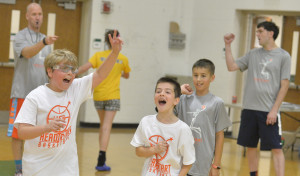
Approaching a practice session with the right approach can make all the difference in maximizing the time a young player spends on the court. Parents who work with their own child or coaches that work with a team of kids are often torn between two schools of thought. The first group believes that practice should involve all drills, mainly repetitive, to build fundamental skills. The second group believes that games, competition, and scrimmages are the best way for young players to learn the game. Which of these methods is more fun? Which of them is more effective? Let’s examine the question of whether practice needs to be fun.
The repetitive drill or block practice approach is often criticized for being “boring”. Who wants to shoot 50 left-handed layups in a row or do the same ballhandling routine day after day? The fact is that most young players need plenty of instruction and repetitive drill work to master the basic fundamentals of the game. There is no escaping the need to put “work” into the game. Yet, at the same time it is very easy for practices filled with repetitive drills to be boring for kids. The way to solve that issue is to use variety and add-ons to make working on a skill more challenging. Most young players enjoy a challenge provided it is something that they can realistically achieve. If the challenge becomes too great and frustration begins to set in, it is time to move on to another drill or add something else to change the feel of the drill. You could work on a different skill that the kids are good at and then come back to the one the kids were struggling with later or at the next practice. Or If you are working on shooting layups off the correct foot for example, you could have the players execute a simple crossover dribble prior to shooting the layup thereby changing the drill (and the challenge) while still getting in more work on the targeted skill. You could split the group into teams and have them compete to see who can make the most layups emphasizing that the layup must be shot with correct technique in order to count. All of these subtle changes can make a big difference in how “drills” are perceived by young players. Drill work is necessary for kids to master a basic basketball skill set. Keep the drills short in duration and long on variety and they’ll have more fun while developing their basketball skills.
The games or random practice approach is based on the idea that games are fun and that the best way to learn “game skills” is to practice under the most game-like conditions possible. Games and scrimmages are perceived to be more fun by most kids when compared to drills. If you’ve ever coached a team of kids in any sport at any level I’m sure you have heard the question, “When are we going to scrimmage?” The fact is, kids love to play. Adding game-like practice activities can make learning fun for kids and give them an opportunity to experience the in-game decision making that they might face in live game action. However, keep in mind that kids still need a basic skill set before they can get much value out of a game-like practice setting. The younger the players, the more “drill work” you need. As players get older they can handle more short squad games and random practice situations. Let’s say your players are playing 2 on 2 and you want to work on cutting to the basket after making a pass or you want to work on setting a ball screen. You can first create a drill to teach the basic fundamental skill of cutting or screening that you want to teach and then have players play 2 on 2 with the rule that the only way they can score is off a basket cut or a ball screen. Players are now practicing the same skill in two ways. Most likely players will have more fun in the 2 on 2 game than the drill, but that doesn’t mean the drill has to be unimaginative or boring. Add some other skills to the drill that add to the challenge, maybe a pass from a teammate before the move is made, or add in defenders to challenge the offense once the basic footwork and movement have been practiced.
The bottom line on fun is this. The younger the player the more that “fun” should be an emphasis. We know that having fun is one of the main reasons kids play sports. With just a little bit of effort on the part of the coach or parent, basketball practice can be a fun experience for kids. Once it ceases to be fun, kids will likely drop out of the game before they ever reach their potential. How do kids define fun? Practice might not be always be “fun” like playing on the playground is “fun,” but if fun can be defined as the opposite of boring, well designed drills should be fun. I don’t think fun means everyone is having a great time and no one is taking practice seriously. However, I also do not believe that practice must exclusively be work. Improvement and fun can be present in the same practice environment.
Click here to register for one of our upcoming programs!
Sign up now to get a “Head Start” on your competition with our free basketball tip of the day delivered straight to your inbox. Click below, enter your email and we’ll also send you our E-Book, “Mental Toughness, Improve Your Brain – Improve Your Game”.
Basketball on the Edge – Why I Choose to Fully Commit to Motion Offense and Man-to-Man Defense by Paul Cortes
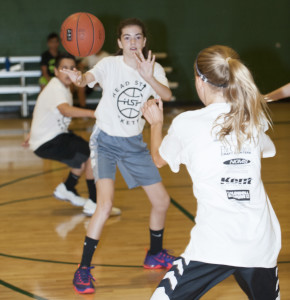
This article by Paul Cortes, the Head Boys Varsity Coach at International High School and the Director of Player and Coach Development for Bay City Basketball, is a great read for youth coaches and parents. Coach Cortes lays out why youth basketball teams should be playing man-to-man defense and running a motion offense. Your child’s basketball experience should be focused on skill development and decision making which will lead them to greater long-term success in the game of basketball.

